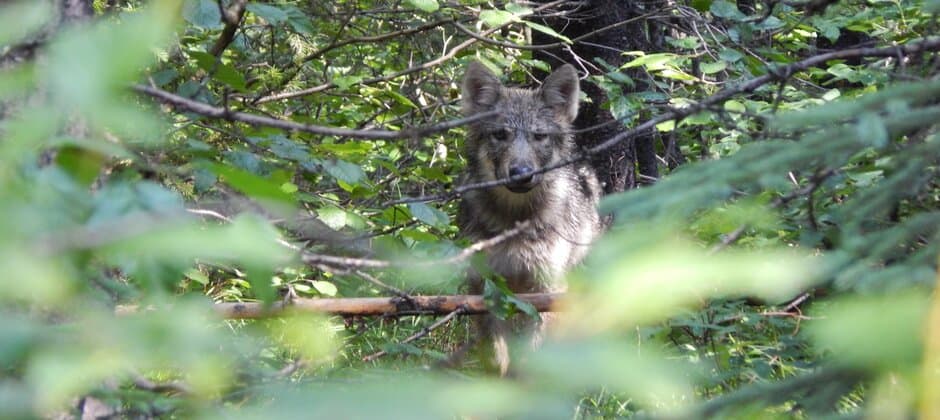Share this article
Wolf immigration doesn’t compensate for losses from hunting
For wolf packs in Idaho and Alberta, immigration from other areas doesn’t compensate for their losses.
“There was very little immigration, even though harvest was removing individuals,” said Sarah Bassing, PhD candidate in environmental and forest sciences at the University of Washington and the lead author of the study published recently in Animal Conservation.
Bassing said that wildlife managers have long assumed that when gray wolves (Canis lupus) are harvested in one region, new individuals from elsewhere will turn up to fill in the gaps. But their research indicates otherwise.
Bassing and her team gathered some of their data for this study using a novel technique that they previously published. They howled at wolves and waited to see whether they replied in Idaho and Alberta. During that research, which showed that howling at wolves was a good way to track packs in a given region, the team also collected scat samples to examine for DNA.
They combined this with other data from 10 years of surveys in Idaho from 2007 to 2016 and three years in southwestern Alberta from 2012 to 2014.
The wolves in Alberta are subject to higher rates of harvest than those in Idaho. Both areas have a mixture of places where wolves are protected, such as national parks, and areas where harvest is allowed.
The researchers found that when a wolf is removed from a pack, it isn’t often replaced by a newcomer. Bassing said this may have something to do with the social structure of packs. Furthermore, when packs are dissolved or move out of an area, new packs also don’t come in very quickly.
“Some new packs were formed at the very end of the study, but a lot of territories just remained vacant,” she said.
Bassing said the longstanding assumption that immigration would fill in the gaps was based on old data that was conducted on healthy wolf populations in northern Canada. The results of her study show that the same rule doesn’t apply in southern Alberta or Idaho.
This finding is mirrored in other recent work published on wolves in and around Banff National Park. Even though wolves were protected inside Banff, hunting outside park borders likely stopped a lot of emigration from happening.
“I’m excited that there seems to be consistency between the results of their study and ours, especially since the data were collected through two very different methods and over different time periods,” Bassing said about the Banff study. “I believe their results support our finding that immigration does not compensate for harvest mortality in some wolf populations.”
Nonetheless, most of Bassing and her team’s work was based on packs and didn’t examine lone wolves, which are harder to track and study due to their solitary nature. It’s possible that more animals are immigrating into new areas at a solitary level.
“There might be a lot of immigration dynamics that are happening at a different scale,” she said. There also may be a time lag — harvesting in Idaho was legalized at the beginning of her study period, and the immigration from outsiders may have a lag effect.
But the results so far show that harvesting can be an effective way of managing wolf populations, if that’s the goal of managers. In other cases, the study shows that managers trying to maintain a population at a certain level might want to think about the hunting rules in regions nearby as well as in their own.
“You can’t just assume that immigrants are going to fill in and make up for that harvest,” Bassing said.
Header Image: Wolf packs don’t quickly replace lost members. Credit: Spencer Rettler








